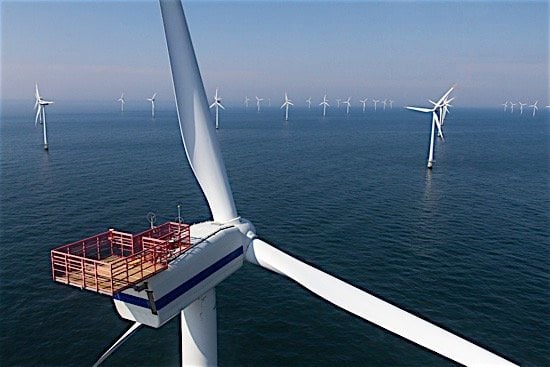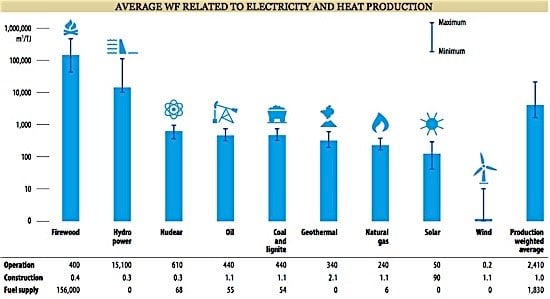
A new report on global wind energy says that wind could supply as much as 20 per cent of the world’s electricity by 2030. The Global Wind Energy Outlook 2016 claims that wind power could reach 2,110 GW by that year, reducing CO2 emissions by more than 3.3 billion tonnes per year, and attracting annual investment of CDN$288 billion. As of the end of 2015, total global wind energy installations were 433 GW, representing 7 per cent of total generating capacity. It is projected that that will grow another 60 GW by the end of 2016.
The report, the work of the Global Wind Energy Council (GWEC), says that new markets are developing rapidly across Africa, Asia and Latin America, while “strong and continued” commitment from China and India, as well as policy stability in the US market, and rapidly dropping prices for wind power make the prospects for its future very good. With the Paris Agreement about to come into force, the report says, climate considerations may further drive the development of wind power as a major source of renewable energy.
The report says that the “dramatic shift” towards renewable energy is being driven by one overarching consideration: cost. Wind turbine prices have fallen by almost a third since 2009, and are expected to decline further. With the right policies in place, electricity costs could decrease by 35 per cent for offshore wind, and 26 per cent for onshore wind by 2025.
Last year was a record year for wind installations. China is the largest market, followed by Europe and North America. In 2015, China added 30.8 GW of new wind power capacity, almost half of the world total.
Canada’s total installed wind capacity was 11.2 GW at the end of 2015, making it the seventh largest market in the world. New wind energy projects in 2015 represented over $3 billion in investment.
The global wind power industry employs nearly 1.1 million people in 2015. The report estimates that for every new megawatt of capacity installed, fourteen person-years of employment are created in manufacturing, component supply, wind farm development, construction, transportation and other services.
To get to zero emissions in the power sector first, and then to a totally emissions free energy system, it is clear that electricity is going to play the dominant role. As well as providing power for an increasing number of services, it is expected that electricity will take over much of the transport sector as well as some substantial portion of heat production.

Wind has become a mainstream power source in much of the world. It already supplies 40 per cent of Denmark’s power generation, 23 per cent of Ireland’s and 31 per cent of the state of Iowa’s. It is the cheapest way to add capacity to the grid, the report states. In the US, the cost of wind energy has dropped more than 65 per cent in the last six years. In order to complete the transformation of the global power generation industry, and the world’s energy system, wind and solar-generated electricity should be the dominant technologies, the report argues. Electricity is poised to take over much of the transport sector, as well as a “substantial” portion of heat production.
A significant portion of the cost reductions are the result of improved technology. Taller towers for turbines, with longer blades and generators with lower cut-in speeds mean that maximum energy extraction even in modest wind regimes is now economical.
The power generation industry is itself a major source of greenhouse gas emissions. Another benefit of wind power is in the reduction of CO2 emissions it can bring about, depending on what type of power generation source it displaces. When wind replaces coal or gas, the benefit is “enormous,” estimated at 600g CO2 per kWh. Emissions from fossil fuel plants range from “around” 500g CO2 per kWh to 1200g or more. Annual CO2 reductions in 2015 were estimated at about 521 million tonnes, thanks to wind power.


































